The name “hippopotamus” comes from a Greek word meaning “water horse” or “river horse.” The hippo is not related to the horse, though. The closest living relatives of the hippopotamus are possibly pigs, dolphins, porpoises, or whales. But, while the “horse” part of the name is rather inaccurate, the “water” reference is spot on. Hippos spend most of their lives in, and under, the water. But how long can a hippo actually hold its breath underwater?
Hippos can hold their breath underwater for as long as five minutes.
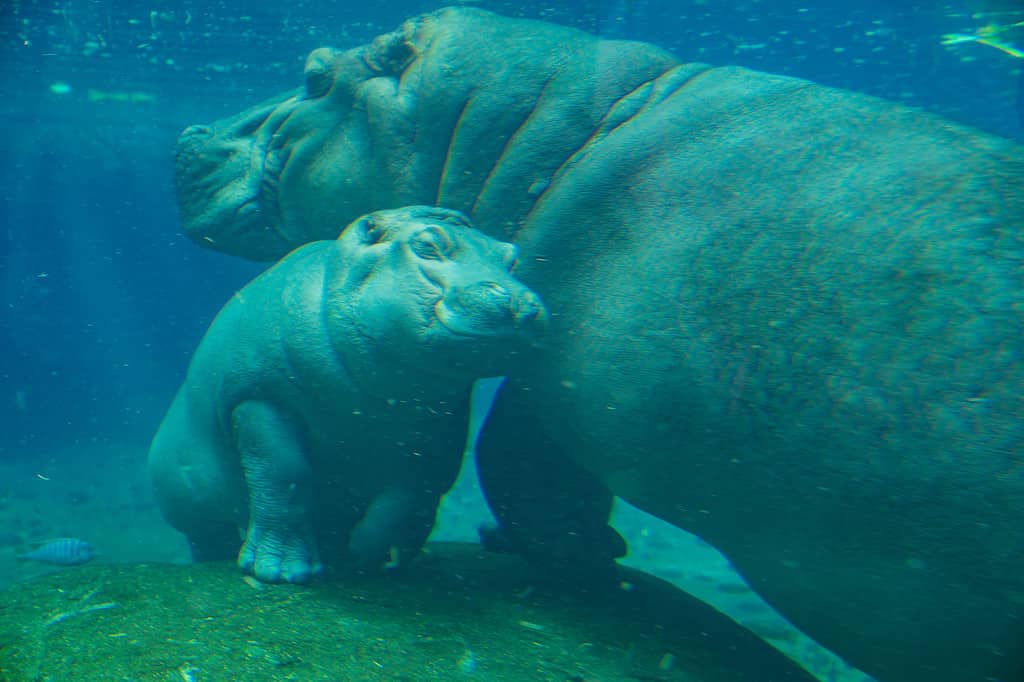
Adult hippos can remain submerged for up to five minutes, while juveniles need to surface more often.
©iStock.com/Bonnie Nordling
Built for Life in the Water
The hippopotamus (Hippopotamus amphibius) can be found in lakes and slow-moving rivers in Africa. A hippo’s skin will dehydrate if it is out of the water for too long, especially in the hot African sun. That’s why these semi-aquatic mammals spend up to 18 hours a day in the water. They will come ashore to graze during the night. But when the sun is high in the sky the following day, you can bet hippos will head back to the water.
The hippo’s eyes, ears, and nostrils are all on top of its head. This adaptation allows the hippo to see, hear, and breathe while most of its body is submerged in its watery habitat.
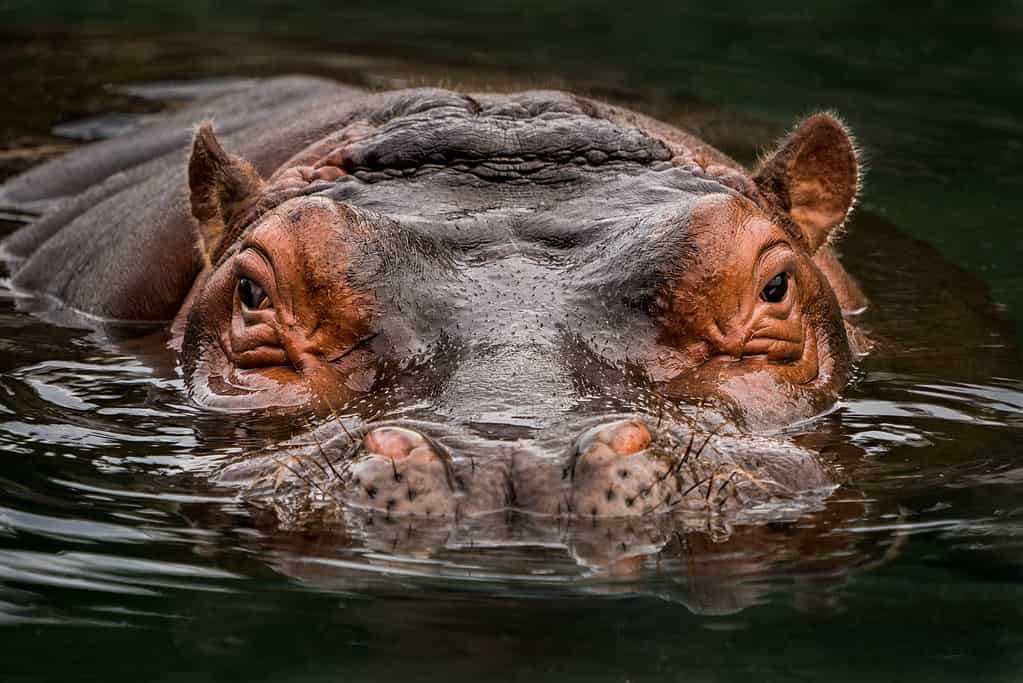
A hippo’s eyes, ears, and nostrils are all on top of its head.
©iStock.com/abzerit
When it dives completely underwater, the hippo closes its nostrils and its ears. Its eyes can stay open, though, thanks to a membrane that functions as a built-in set of goggles protecting its eyes.
Hippos are so at home in the water that they can even sleep underwater. They have a natural reflex that propels them to the surface to breathe without ever waking up.
But how can these huge mammals hold their breath for up to five minutes? Hippos feature an adaptation that shuts off their lungs while underwater but still allows oxygenated blood to keep circulating. This is why hippos don’t pass out like humans would while underwater for such a long duration.
Hippos are also at rest during these long five-minute underwater stretches. They move very little, if at all, allowing their body to require less oxygen. Hippos can also be playful and quite active in the water, but this activity requires more oxygen, meaning they must surface much more often.
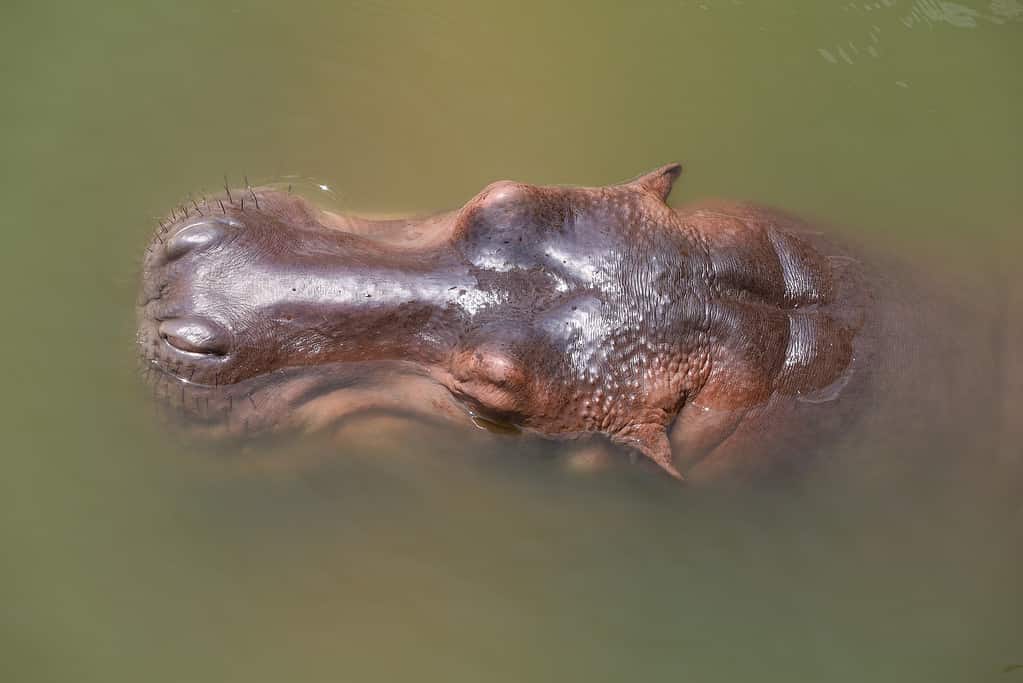
Hippos sleep in the water. They surface to breathe without waking up.
©iStock.com/pumppump
Baby Hippos
It’s only adult hippos that can hold their breath for up to five minutes. Younger hippos don’t have the same lung capacity and must surface more often. Infant hippos, for instance, can only hold their breath for 30-40 seconds.
Hippos often give birth in the water, so hippo calves must begin holding their breath from the moment they are born. Infant hippos also nurse underwater, meaning they suckle for around 20-30 seconds, and then must surface to breathe. Then they dive back underwater to repeat the process. This is done numerous times in just one nursing session.
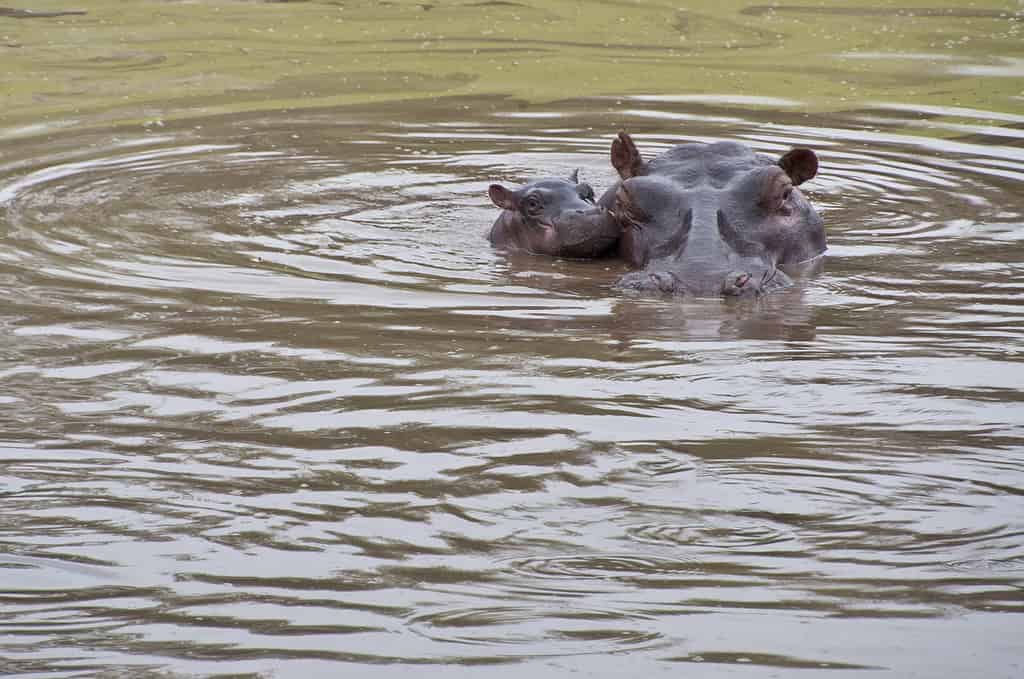
The life of a hippo calf begins in the water.
©iStock.com/nwbob
Can Hippos Swim?
Many aquatic and semi-aquatic mammals are excellent swimmers, but the hippo is not among them. In fact, hippos can’t swim at all! Hippos walk, gallop, and prance across the bottom of the lake or river. Their dense bones allow them to remain submerged rather than expending energy to hold themselves underwater. Their body mass gives them buoyancy that allows hippos to move with remarkable grace, almost effortlessly gliding across the lake or river floor.
However, since hippos are mammals, they can’t breathe underwater. They must eventually surface for a breath. They may simply walk into the shallows, where they remain standing while their nostrils break through the water’s surface. In slightly deeper water, hippos may stand on their hind legs, giving them enough height to get their nostrils above water. Or, in even deeper water, hippos will push off the bottom and propel themselves to the surface for a breath of air.
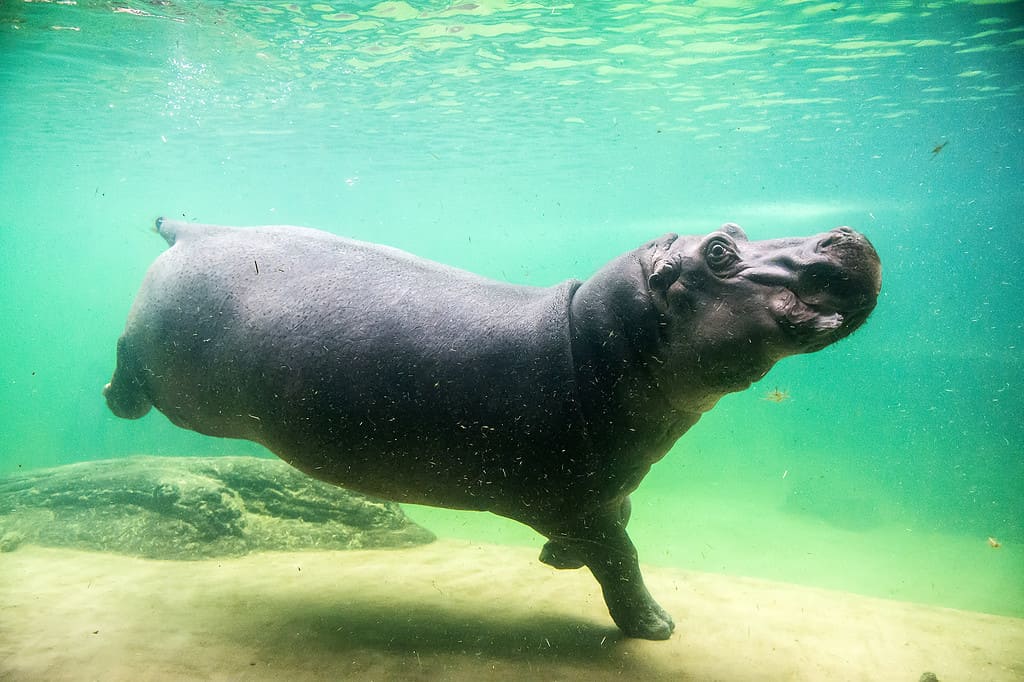
Hippos can’t swim, but they move with surprising grace and ease along the river or lake floor.
©iStock.com/morgan23
Hippos Keep the Water Moving
As you can imagine, hippos keep the water stirred up as they surface, dive, and move across the muddy river bottom. Mature female hippos can weigh 3,000 pounds, while males can potentially grow over 9,000 pounds. A hippo herd (known as a bloat) can number 20 individuals or more. That’s a whole lot of hippo bulk splashing around and stirring up the water, which is exactly how hippos help the overall ecosystem.
As the hippos churn the silt from the river floor, they release vital nutrients for insects and snails. Those insects and snails, in turn, become food for other animals.
A hippo bloat can also keep the river water flowing rather than being clogged with reeds. That’s especially important during the dry season. When the rains stop, every drop of water is precious for the fauna of Africa. Hippos do their part to keep that water flowing.
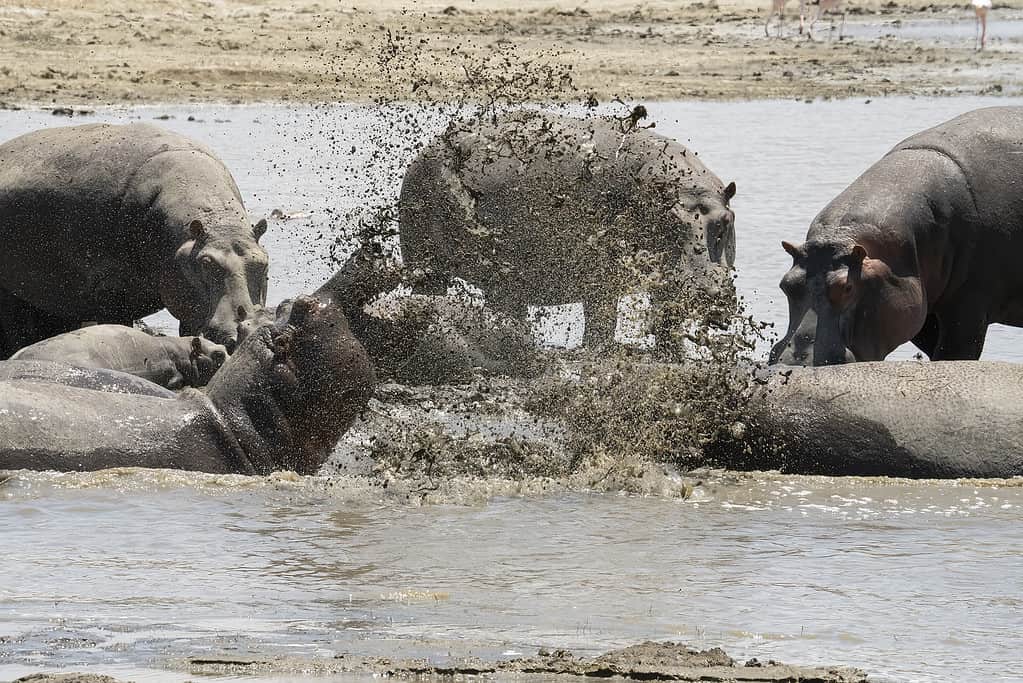
A hippo bloat certainly keeps the water churned up!
©iStock.com/Moshe Einhorn
The photo featured at the top of this post is © iStock.com/curioustiger
Thank you for reading! Have some feedback for us? Contact the AZ Animals editorial team.






